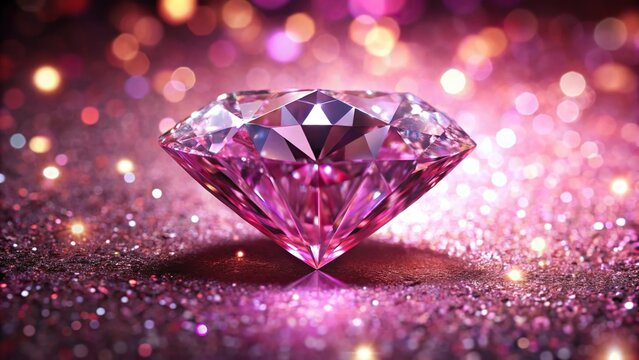
In the realm of gemstones, diamonds have always held a special place. They signify love, commitment, and luxury. However, the traditional journey of a diamond from deep within the earth to a glittering engagement ring or a dazzling necklace has undergone a significant transformation in recent years. Enter the era of lab-grown diamonds, where science meets beauty in a fascinating synergy that challenges conventional norms and sparks intriguing conversations.
Lab grown diamonds are forever, also known as synthetic or cultured diamonds, are not to be confused with diamond simulants like cubic zirconia or moissanite. Instead, they are real diamonds, possessing the same chemical composition, crystal structure, optical properties, and hardness as their natural counterparts. The primary difference lies in their origin: natural diamonds form over millions of years deep within the Earth’s mantle, while lab-grown diamonds are cultivated in controlled laboratory environments using advanced technological processes.
One might wonder, why choose a lab-grown diamond over a natural one? The reasons are manifold. Firstly, ethical considerations come into play. Traditional diamond mining often raises concerns about environmental damage, human rights violations, and the funding of conflict, commonly known as “blood diamonds.” In contrast, lab-grown diamonds are inherently conflict-free, as they are produced ethically and sustainably without the need for mining.
Moreover, lab-grown diamonds offer a level of traceability that is unparalleled in the diamond industry. Each stone can be tracked from its inception in the laboratory to its final destination, providing consumers with assurance regarding its origin and authenticity. This transparency resonates with an increasingly conscientious consumer base that values ethical sourcing and sustainability.
Beyond ethical considerations, lab-grown diamonds also present practical advantages. They are typically priced lower than their natural counterparts, making them more accessible to a broader range of consumers. This affordability opens up possibilities for individuals who desire the beauty and elegance of diamonds but may have been deterred by the high price tag associated with natural stones.
Furthermore, lab-grown diamonds offer greater flexibility in customization. Unlike natural diamonds, which are limited by the constraints of geological formations, lab-grown diamonds can be produced in a variety of sizes, shapes, and colors to suit diverse preferences and design requirements. This versatility empowers consumers to express their individuality through bespoke jewelry creations that reflect their unique style and personality.
In terms of quality, lab-grown diamonds are on par with natural diamonds, if not superior in some aspects. Thanks to advancements in technology and manufacturing techniques lab made diamonds, lab-grown diamonds exhibit exceptional purity and clarity, with fewer inclusions and blemishes than their mined counterparts. They also boast excellent color consistency and can be produced in fancy colors such as vivid pinks, blues, and yellows, expanding the palette of possibilities for jewelry designers and aficionados.
Moreover, lab-grown diamonds contribute to the ongoing evolution of the diamond industry, driving innovation and pushing boundaries in materials science and engineering. As research and development efforts continue to enhance the efficiency and scalability of diamond synthesis processes, the future promises even greater strides in the production of lab-grown diamonds, further cementing their status as a sustainable and desirable choice in the world of fine jewelry.
It’s important to note that the rise of lab-grown diamonds does not signify the end of natural diamonds. Both varieties coexist in the market, each catering to different preferences and priorities. While some may still be drawn to the mystique and rarity of natural diamonds, others embrace the innovation and sustainability of lab-grown diamonds. Ultimately, the choice between the two is a matter of personal preference, guided by individual values and priorities.
In conclusion, lab-grown diamonds represent a compelling alternative in the world of fine jewelry, offering a blend of beauty, ethics, and innovation. As consumer awareness continues to grow and technology advances, lab-grown diamonds are poised to shine ever brighter, illuminating the path towards a more sustainable and inclusive jewelry industry. In this new era, diamonds truly are forever, whether born from the depths of the earth or nurtured in the laboratories of human ingenuity.





